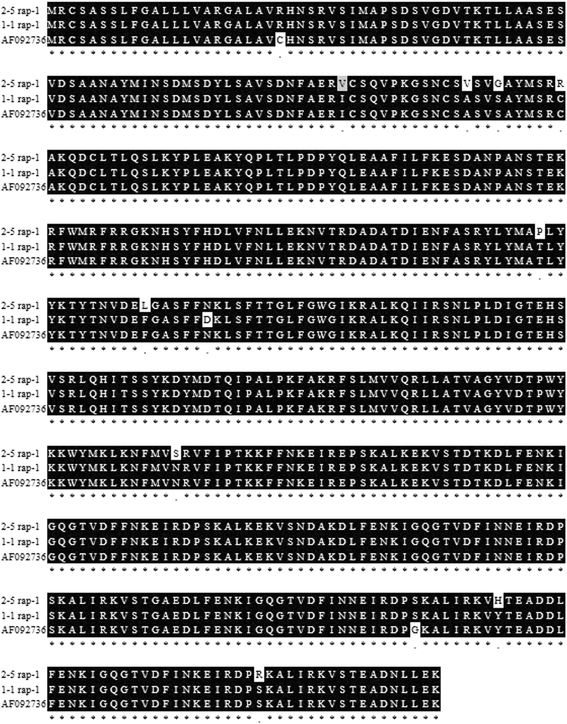Assessment of Theileria equi and Babesia caballi infections in equine populations in Egypt by molecular, serological and hematological approaches
- PMID: 27146413
- PMCID: PMC4857240
- DOI: 10.1186/s13071-016-1539-9
Assessment of Theileria equi and Babesia caballi infections in equine populations in Egypt by molecular, serological and hematological approaches
Abstract
Background: Equine piroplasmosis (EP) caused by Theileria equi, Babesia caballi, or both, contributes to significant economic loss in the equine industry and remains uncontrolled in Egypt. This study focuses on surveying T. equi and B. caballi infections and hematological disorders in equine populations in Egypt.
Methods: Theileria equi and B. caballi infections were assessed in blood from 88 horses and 51 donkeys in Egypt using light microscopy, indirect immunofluorescent antibody test (IFAT), nested PCR (nPCR), and competitive-ELISA (cELISA) assays. PCR products were examined for specificity by DNA sequencing. Hematological alterations were evaluated using a standard cell counter.
Results: Microscopic analysis revealed EP infection in 11.4% and 17.8% of horses and donkeys respectively. IFAT detected 23.9% and 17.0% infection of T. equi and B. caballi, respectively, in horses, and 31.4% of T. equi and B. caballi in donkeys. T. equi cELISA detected 14.8% and 23.5% positive horses and donkeys, respectively, but the B. caballi RAP-1-based cELISA failed to detect any positives, a result hypothesized to be caused by sequence polymorphism found in the rap-1 genes. Nested-PCR analysis identified 36.4% and 43.1% positive horses and donkeys, respectively for T. equi and it also identified 19.3% and 15.7% positive horses and donkeys, respectively for B. caballi. The overall EP incidence found in the population under study was relatively high and comparable regardless of the diagnostic method used (56.8% using nPCR and 48.9% using IFAT). Hematologic analysis revealed macrocytic hypochromic anemia and thrombocytopenia in all piroplasma-infected horses.
Conclusions: The data confirm relatively high levels of EP, likely causing hematological abnormalities in equines in Egypt, and also suggest the need for an improved serological test to diagnose B. caballi infection in this region.
Keywords: Babesia; Competitive ELISA; Equine; Hemogram; IFAT; Nested PCR; Theileria.
Figures


Similar articles
-
Molecular and serological detection of Theileria equi and Babesia caballi infection in horses and ixodid ticks in Iran.Ticks Tick Borne Dis. 2014 Apr;5(3):239-44. doi: 10.1016/j.ttbdis.2013.11.008. Epub 2014 Feb 17. Ticks Tick Borne Dis. 2014. PMID: 24556274
-
Development and validation of a duplex real-time PCR assay for the diagnosis of equine piroplasmosis.Parasit Vectors. 2018 Mar 2;11(1):125. doi: 10.1186/s13071-018-2751-6. Parasit Vectors. 2018. PMID: 29499748 Free PMC article.
-
Detection of Theileria equi and Babesia caballi infections in Venezuelan horses using Competitive-Inhibition ELISA and PCR.Vet Parasitol. 2013 Sep 1;196(1-2):37-43. doi: 10.1016/j.vetpar.2013.02.004. Epub 2013 Mar 5. Vet Parasitol. 2013. PMID: 23582233
-
Review of equine piroplasmosis.J Vet Intern Med. 2013 Nov-Dec;27(6):1334-46. doi: 10.1111/jvim.12168. Epub 2013 Aug 28. J Vet Intern Med. 2013. PMID: 24033559 Review.
-
Equine piroplasmosis: an insight into global exposure of equids from 1990 to 2019 by systematic review and meta-analysis.Parasitology. 2020 Nov;147(13):1411-1424. doi: 10.1017/S0031182020001407. Epub 2020 Aug 3. Parasitology. 2020. PMID: 32741382 Free PMC article.
Cited by
-
New insights in the diagnosis and treatment of equine piroplasmosis: pitfalls, idiosyncrasies, and myths.Front Vet Sci. 2024 Aug 14;11:1459989. doi: 10.3389/fvets.2024.1459989. eCollection 2024. Front Vet Sci. 2024. PMID: 39205808 Free PMC article. Review.
-
Genetic Characterization of Piroplasms in Donkeys and Horses from Nigeria.Animals (Basel). 2020 Feb 18;10(2):324. doi: 10.3390/ani10020324. Animals (Basel). 2020. PMID: 32085574 Free PMC article.
-
Twenty Years of Equine Piroplasmosis Research: Global Distribution, Molecular Diagnosis, and Phylogeny.Pathogens. 2020 Nov 8;9(11):926. doi: 10.3390/pathogens9110926. Pathogens. 2020. PMID: 33171698 Free PMC article. Review.
-
Molecular and Serological Detection of Piroplasms in Horses from Nigeria.Pathogens. 2021 Apr 23;10(5):508. doi: 10.3390/pathogens10050508. Pathogens. 2021. PMID: 33922468 Free PMC article.
-
Prevalence of endo- and ecto-parasites of equines in Iran: A systematic review.Vet Med Sci. 2021 Jan;7(1):25-34. doi: 10.1002/vms3.321. Epub 2020 Jul 9. Vet Med Sci. 2021. PMID: 32644306 Free PMC article.
References
Publication types
MeSH terms
Substances
LinkOut - more resources
Full Text Sources
Other Literature Sources

